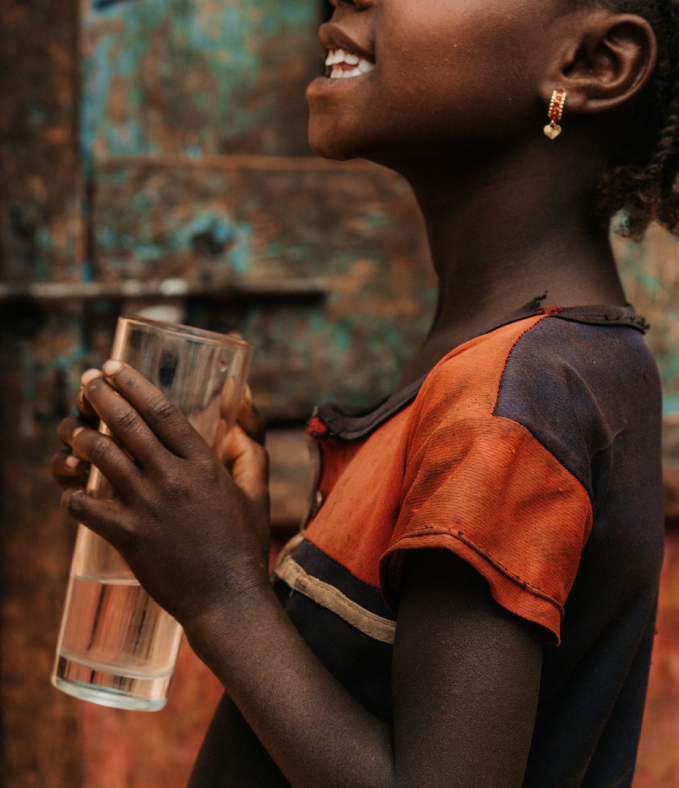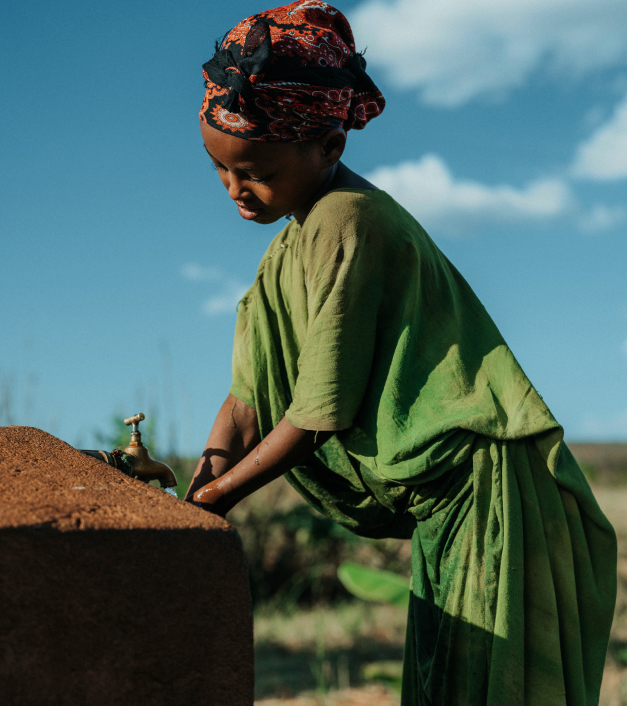Ethiopia ranks 175 out of 193 countries in the UN’s Human Development Index. The Ethiopia water crisis has left over 57 million people in rural areas without access to clean water, and more than 31 million remain unreached by the gospel.
ETHIOPIA BY THE NUMBERS
Water Crisis in Ethiopia
The Water Crisis in Ethiopia
DO SOMETHING
Fund a Project in Ethiopia
Serve an entire community or school with clean and living water. Projects range in cost depending on the region, project type, and amount of people served.
Serving the Unreached
In Oromia and Central Ethiopia regions, the Christian Church is the extreme minority. Christians are often persecuted for their faith. Local churches are marginalized and often neglected by the wider community.
Our local partners invite pastors and churches to participate in providing clean water, meeting physical needs while addressing the Ethiopia water crisis. This helps them build credibility, trust, and meaningful relationships.
Our programs in Ethiopia provide evangelism training and resources to support local pastors as they plant home groups among the unreached.

Our Plan for the Water Crisis in Ethiopia
With your help, more than 200,000 rural people will be served with access to clean and living water in communities and schools in three districts by the end of 2028—a significant step toward addressing the Ethiopian water crisis. You can make it possible to see:
communities gain access to clean drinking water through hand pumps, mechanized boreholes, and piped water systems connected to community tap stands, including in schools
communities trained to operate and maintain water points
community leaders trained in hygiene and sanitation promotion
pastors, evangelists, and local believers mobilized to participate in WASH programs as an access point to share the gospel with unreached communities
How the Water Crisis in Ethiopia Affects Daily Life
The Ethiopia water crisis is not just about thirst—it’s about the daily struggle for survival. In many rural communities, clean water is miles away, requiring hours of walking each day to collect enough for cooking, drinking, and washing. This burden often falls on women and children, who carry heavy containers back home from unsafe, unprotected sources like rivers, ponds, or shallow hand-dug wells. What should be a basic human right becomes a time-consuming, physically demanding task that limits opportunities for work, learning, or rest.
Waterborne diseases are also a constant threat. Families are often forced to drink from sources shared with livestock or contaminated by runoff, leading to repeated cases of diarrhea, typhoid, and parasitic infections. In areas most affected by the Ethiopia water crisis, healthcare facilities themselves often lack running water and proper sanitation—making it nearly impossible to treat patients or prevent the spread of illness. Hygiene practices, especially during childbirth or illness, become high-risk due to the lack of clean water.
Beyond health and time, the crisis erodes dignity. Clean water is essential for bathing, cooking, and maintaining basic cleanliness. When communities don’t have access to safe water, it reinforces cycles of poverty and social isolation. The inability to wash clothing, maintain hygiene, or provide clean drinking water for children creates a sense of helplessness and despair. In these areas, addressing the Ethiopia water crisis is about restoring not just physical health, but also dignity and hope for a better life.
How the Water Crisis in Ethiopia Harms Children
Children are among the most vulnerable to the effects of the Ethiopia water crisis. For many girls, the day begins not with a walk to school, but with a long trek to fetch water. This daily task often takes several hours, robbing them of the chance to attend class, play, or rest. In some cases, they are forced to make the journey more than once, sacrificing their safety and education just to meet their family’s basic water needs. The weight of water becomes both a literal and figurative burden that defines childhood in many Ethiopian villages.
Even when children do go to school, water scarcity continues to affect their learning. Many schools lack clean water and proper sanitation facilities, making it hard for students to stay healthy and focused. Girls especially suffer when there are no private toilets or places to wash during their menstrual cycles—leading to frequent absences and, eventually, higher dropout rates. The Ethiopia water crisis quietly but powerfully limits the dreams of children who deserve a fair chance at a future.
Health is another major concern. Children have weaker immune systems, making them more susceptible to the diseases caused by drinking dirty water. Repeated illness leads to malnutrition, developmental delays, and even death. In communities where the water crisis is severe, preventable waterborne illnesses are a leading cause of childhood mortality. Addressing the Ethiopia water crisis is one of the most urgent ways to protect children—not just from illness, but from losing their chance to grow, learn, and thrive.
Stories from Ethiopia
Frequently Asked Questions
1. How many people in Ethiopia lack access to clean water?
More than 57 million people living in rural Ethiopia do not have access to clean drinking water within a 30-minute collection trip—a key benchmark for measuring basic water access. This means that millions of families must walk long distances each day just to fetch water, often from unreliable or unsafe sources like rivers, ponds, or shallow hand-dug wells. The burden of this lack of access disproportionately falls on women and children, who are typically responsible for water collection in their households. This daily struggle not only consumes time but also puts their health at risk due to exposure to waterborne diseases and physical exhaustion. The staggering number—over half of Ethiopia’s rural population—highlights the urgent need for long-term water solutions in these communities.
2. What are the main causes of the water crisis in Ethiopia?
In the targeted districts of southern Ethiopia, the primary challenges include:
- Inadequate Access: The groundwater table is too deep for traditional hand pumps, resulting in fewer reliable water sources. Consequently, women and children must walk long distances and wait in line to collect water.
- Collection Time: During the dry season, women and children can spend 4-6 hours a day collecting water.
Disease: Each year, more than 25,000 children under five in Ethiopia die due to diarrhea. The lack of clean drinking water leads to an increase in preventable diseases such as cholera, typhoid fever, dysentery, and other illnesses.
3. How does the water crisis impact children and women in Ethiopia?
Women and children are disproportionately affected by the water crisis. They often spend significant portions of their day—up to 4-6 hours during the dry season—collecting water, which limits their time for education and other productive activities. Additionally, the consumption of contaminated water contributes to high rates of preventable diseases, with over 25,000 children under five dying annually from diarrhea.
4. How is neverthirst helping with the Ethiopian water crisis?
neverthirst aims to serve more than 200,000 rural people with access to clean and living water in communities and schools across three districts by the end of 2028. Their plan includes:
- Providing 230 communities with access to clean drinking water through hand pumps, mechanized boreholes, and piped water systems connected to community tap stands, including in schools.
- Training local communities to operate and maintain water points.
- Training over 500+ community leaders in hygiene and sanitation promotion.
- Mobilizing 100 pastors, evangelists, and local believers to participate in WASH (Water, Sanitation, and Hygiene) programs as an access point to share the gospel with unreached communities.
5. Is my donation really making a difference?
Absolutely. Your donation directly contributes to providing clean water access to communities in need. For example, funding a Community Hand Pump can serve 300-500 people, significantly improving their quality of life and health outcomes.
Get Our Emails
Get our monthly newsletter with stories of impact, ways to pray for the unreached, tips for giving, and more ways to impact the world around you.

